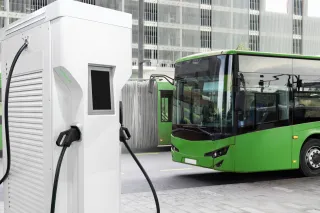COVID and climate change are a tip of an iceberg that stretch the public resources beyond the limits in many cities. Decision-makers struggle to solve multiple challenges that pop up rapidly or develop more gradually over time. Unfortunately, many authorities are only able to focus on reactive emergency actions that are often too little and too late. This leads to a critical path: more and more resources go to ad-hoc actions whereas less and less remains for the long-term development of better services for the citizens and a more attractive business environment for the companies.
Crisis accelerate collaboration
However, some cities are able to turn the challenges into opportunities and create a positive spiral. They re-invent the city´s role towards the residents and towards the broader community. They understand the city as a service, not as an institution or authority. They turn the city into an innovation hot spot that brings the citizens, business, research and policy makers together to build a better future for the city community.
Innovative public policy makers use the city’s services, properties and development projects as collaborative platforms where novel products and solutions are co-created for the local use and for the global market. They use public finances as seed funding to ambitious joint projects that attract private investments from home and abroad. This is mutually beneficial as the city can multiply the expertise and resources devoted to societal challenges and the partner companies get real-life references for their export efforts.
Flight simulator finds the way to the new normal
“Restart Espoo” is an excellent example of an innovative approach to the COVID pandemic. City’s top management worked intensively with VTT’s experts to map the potential impacts of policy actions under different future scenarios. Together we wanted to counteract harmful implications of the virus to the citizens and businesses and to create a positive, re-enforcing growth to various stakeholders. This was done with a virtual management tool that connects data from multiple sources and allows simulation of alternative actions before making the decisions. Modelling the complicated system and the linkages between its key elements helped the City to save time and money when reacting to the new phases of the crisis.
According to Päivi Sutinen, Director for City as a Service development in Espoo: “Restart Espoo is our flight simulator that helps us to find the most cost-effective response to the virus and to maintain our excellent services to the citizens. It makes visible the critical expertise that our city needs from our partners to build a more resilient city. Together we want to create a new normal that is more sustainable in social, environmental and economic terms - and resilience is a key to that!”
Co-investments create the sustainable future
More sustainable future requires also a long-term transformation of the energy and transport systems in the urban environment. City of Tampere published recently a roadmap that includes 236 actions towards carbon-neutrality by 2030. One of the key actions is a new tram system to transform the city that has mainly relied on busses. The new rail infrastructure and the service network will shift passengers from cars to public transport that is powered by sustainable energy. It will also drive the sustainable growth of the city towards new residential and business areas.
As Teppo Rantanen, Executive Director of economic policy, competitiveness and innovation at the City of Tampere, puts it: “We use the 200+ MEUR transport system investment as an innovation platform to attract partners and investments from Finland and abroad. Smart Rail ecosystem with nearly 30 companies, research partners and City authorities share data from various sources to create better services for the citizens and to reduce the carbon footprint of the city. We will also apply the ecosystem approach in Hiedanranta district to develop housing for 25.000 residents and office space for 10.000 jobs that are connected to city center by the new tram line.”
VTT builds knowledge and ecosystems
Espoo and Tampere show how visionary policy makers and city leaders can set ambitious goals and involve citizens, businesses and researchers to solve the challenges and to create a positive spiral. They also connect local activities smartly (1) to the national policy goals and resources, (2) to the European Union Green Deal, EU Recovery and Resilience Facility and other funding instruments, and (3) to the United Nations Sustainable Development Goals and investments. This turns the cities into innovation labs that attract people, partners and investments internationally - and provides a springboard for local companies to the global market.
VTT is grateful to be a strategic partner for Espoo and Tampere on their way to the sustainable future. We help cities to navigate in the rapidly changing environment with solid scientific research and its applications to real-life problems. Our expertise in foresight studies, strategy processes, impact leadership and CityTune analytics support the visionary leaders to set comprehensive goals for economic, ecological and societal sustainability and to implement the roadmaps towards desired target. Our deep technology knowledge in energy, transport and other areas relevant to public policies brings in the latest innovations to solve the concrete tasks on the way to reach the goals.
Together with innovative city leaders, companies and universities we can build a sustainable future for other cities as well!
Interesting happening ahead:
Tampere Smart City Week 26.-28.1.2021 brings virtually together all the people interested in smart city development. Join the event and let's discuss more!




